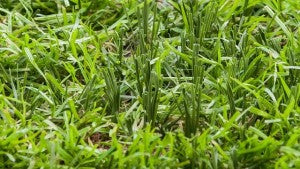Turf technology: Will pitch help England beat Uruguay?

With desperate fans clinging to any sign of hope, could it be that Dutch carpet-manufacturing technology comes to England's rescue?
When England's players walk out on to the Arena de Sao Paulo pitch on Thursday for their qualifier against Uruguay, their studs will be sinking into familiar terrain.
It is that distinctive feel of the hybrid pitch - part polyethylene, part normal grass, blades that are 4% plastic and 96% as-nature-intended.
It was trail-blazed by Huddersfield Town in the mid-1990s, because they needed a pitch tough enough for both football and rugby. And the method has become turf's "third way" in the Premier League, a thoroughly English compromise.
It remains a relatively recent technology for the World Cup. Two stadiums tried hybrid pitches in South Africa in 2010, for the first time in the competition's history.
On Thursday England will be playing on Brazil's only hybrid pitch.
"This might offer that 0.001% of a difference," says David Saltman, of Pitchcare, who has been a groundsman for 25 years. "But that's what managers care about, because that can win them games."
Turf tech
Computer-guided injection machines worked their way methodically around the Arena de Sao Paulo last November - though from a distance they simply looked like two juddering mobile tents.
The machines were busy injecting more than 20 million plastic fibres into the soil.
In a painstaking process, polyethylene fibres - fake grass - were planted in a grid system, which broke the pitch down into 2cm (0.8in) by 2cm units.
The devices are like huge sewing machines, drawing on the same kind of technology used in the carpet-making industry.
This is no coincidence, because the Dutch firm that specialises in this technique, Desso, is a carpet manufacturer.
Each machine cuts the plastic yarn into 40cm strips, which are "bobbed" in front of a needle. The needle catches the plastic at mid-point to create a loop, which is then plunged into the ground.
Once the plastic fibres are laid in this way, special sports grass seed is grown and established, so the two intertwine at root level. This is what is called a hybrid pitch.
It is a method born of frustration with other turf techniques.
To read the full story click here
